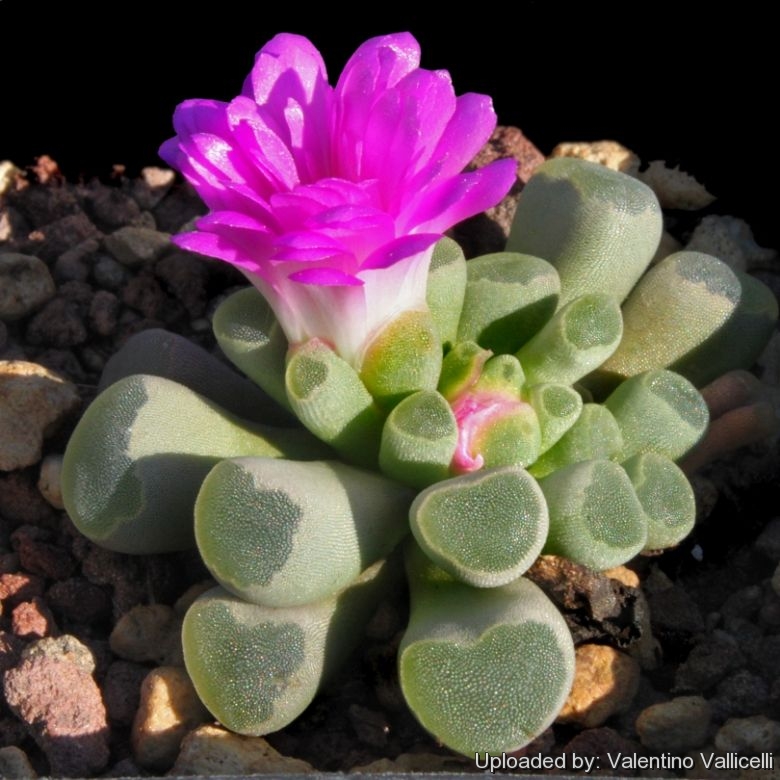
Frithia pulchra Photo by: Valentino Vallicelli
It is one of the nicest window-leaf succulents and very popular as the shape of the leaves is truly unique and when in flower the magenta petals with lighter centres are particularly showy.
Origin and Habitat: It is endemic to South Africa. Magaliesberg from Hartbeeshoek to the Rustenburg
Habitat: Its natural habitat is the temperate grassland in the summer-rainfall region at higher altitudes. It grows in very shallow soils with coarse quartzite gravel or sand stone and often on exposed rock plates, the roots anchored in cracks between the coarse quartzite rocks. This substrate reaches very high temperatures in summer and may experience frosts during severe winters. The transparent fenestrate leaf tips are often above the ground and allow light into the leaves for photosynthesis. Precipitation ranges around 500 mm of rain per annum. It grows sparsely scattered but forms impressive monotypic stands when in flowers, although the sunken plants are not conspicuous individually.
Synonyms:
Common Names include:
ENGLISH: Transvaal Fairy Elephant's Feet, Baby Toes, Window Plant, Purple Baby-toes
Description: It is a dwarf rosette forming perennial succulents that grows almost completely embedded in the ground and it is just visible above the soil surface in their natural habitat. It is somehow similar looking to the Fenestraria rhopalophyllaSN|11322]]SN|11322]], but its leaves are more tubular.
Rosettes: Up to 30 mm in diameter (O more in cultivation)
Stem: Almost stemless, or with a much reduced stem
Leaves: Club shaped up to 2 cm long and 4-5 mm in diameter, often partially buried, grey-green, arranged in a cluster, flattened or rounded and transparent at the tips with irregular edges so that light can shine through them into the inner tissues. Sides of leaves edged with big cells in vertical rows, the stomata hidden in the narrow valley in between, wax cover almost complete, surface rugose.
Roots: Short, thickened underground rootstock.
Flowers: About 25 - 35 mm in diameter, solitary, borne on very short stalks or stalkless, bright magenta with a white or light yellow centre, The five sepals are unequal and closely resemble the cylindrical leaves. Petals number between 30 and 45 decreasing in lengths toward the centre and usually with blunt, rounded tips. Forms with flowers of different colours are available.
Blooming season: May
Fruits: About 5 mm in diameter x 7 mm long. Quite robust, yellow to ochre, spongy capsules, globose to oval in shape resembling a barrel the top forming only a tiny lid and open when wetted and close when dry (hygrochastic capsules), releasing the seed.
Seeds: Brown.
Notes: Frithia pulchraSN|11568]]SN|11568]] appears very similar to Fenestraria rhopalophyllaSN|11322]]SN|11322]], though the leaves are a slightly different shape and F. rhopalophylla has yellow flowers, compared to the pink flowers of F. pulchra.
Remarks: During periods of drought the plant shrink in size as a result of moisture loss. They sometimes even disappear below the grit under adverse conditions, making them very difficult to find. The shrinkage is achieved by means of leaf cells arranged in columnar rows. When moisture is lost and the contents shrink, the tangential cell walls contract, drawing the plants deeper into the soil avoiding desiccation during the dry winter months or in times of drought.
 Frithia pulchra Photo by: Valentino Vallicelli
Frithia pulchra Photo by: Valentino Vallicelli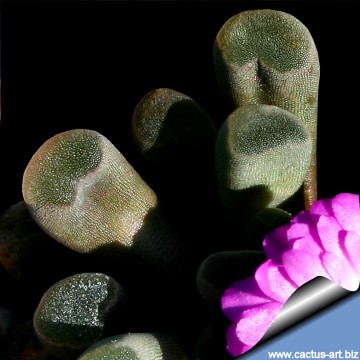 Frithia pulchra Photo by: Cactus Art
Frithia pulchra Photo by: Cactus Art Frithia pulchra Photo by: Valentino Vallicelli
Frithia pulchra Photo by: Valentino Vallicelli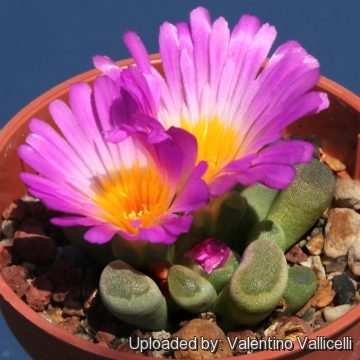 Frithia pulchra Photo by: Valentino Vallicelli
Frithia pulchra Photo by: Valentino Vallicelli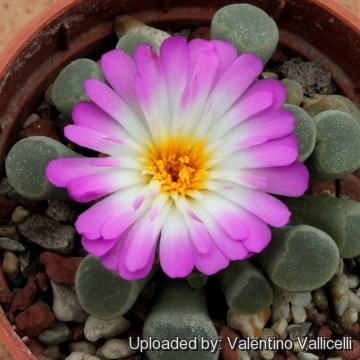 Frithia pulchra Photo by: Valentino Vallicelli
Frithia pulchra Photo by: Valentino Vallicelli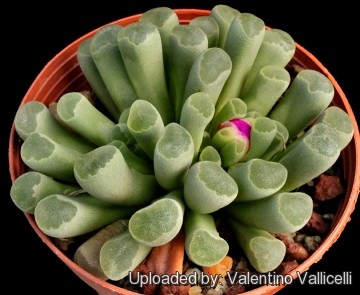 Frithia pulchra Photo by: Valentino Vallicelli
Frithia pulchra Photo by: Valentino Vallicelli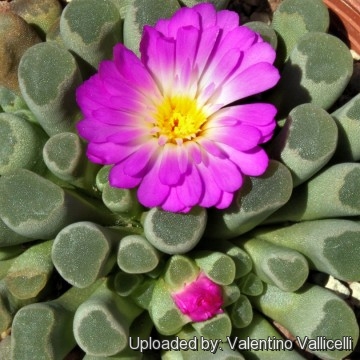 Frithia pulchra Photo by: Valentino Vallicelli
Frithia pulchra Photo by: Valentino Vallicelli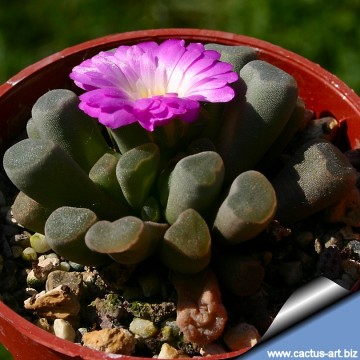 Frithia pulchra Photo by: Cactus Art
Frithia pulchra Photo by: Cactus ArtCultivation and Propagation: It is a summer grower relatively easy to cultivate, it need light sporadic watering during its winter resting period and requires moderate sprinkling in summer as it is rot prone if kept too moist when the heat turns off its growth cycle. Gritty, well drained soil containing a small amount of organic material will keep this species happy. It can be grown in pots or out of doors in a rockery. Soak the compost fully but allow it to dry out perfectly between waterings. Under-watering can lead to disastrous results, so be generous with water in summer. Nearly all problems occur as a result of overwatering and poor ventilation especially when weather conditions are dull and cool or very humid. It does well in full blazing sun, as well as whit some shade in summer. Hardy to -4°C.
Propagation: They can be sown from seed sown in a gritty sandstone (acid) medium or propagated vegetatively by division (beware that the leaves break very easily) .
Your Photos
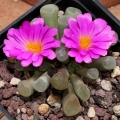
by Valentino Vallicelli
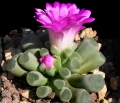
by Valentino Vallicelli
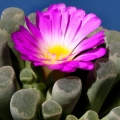
by Valentino Vallicelli






















